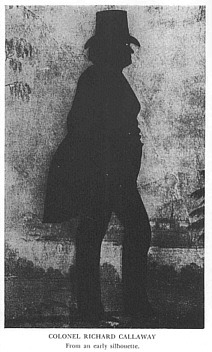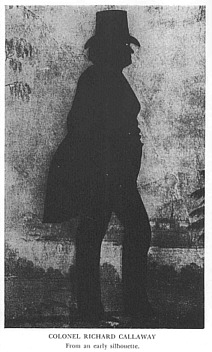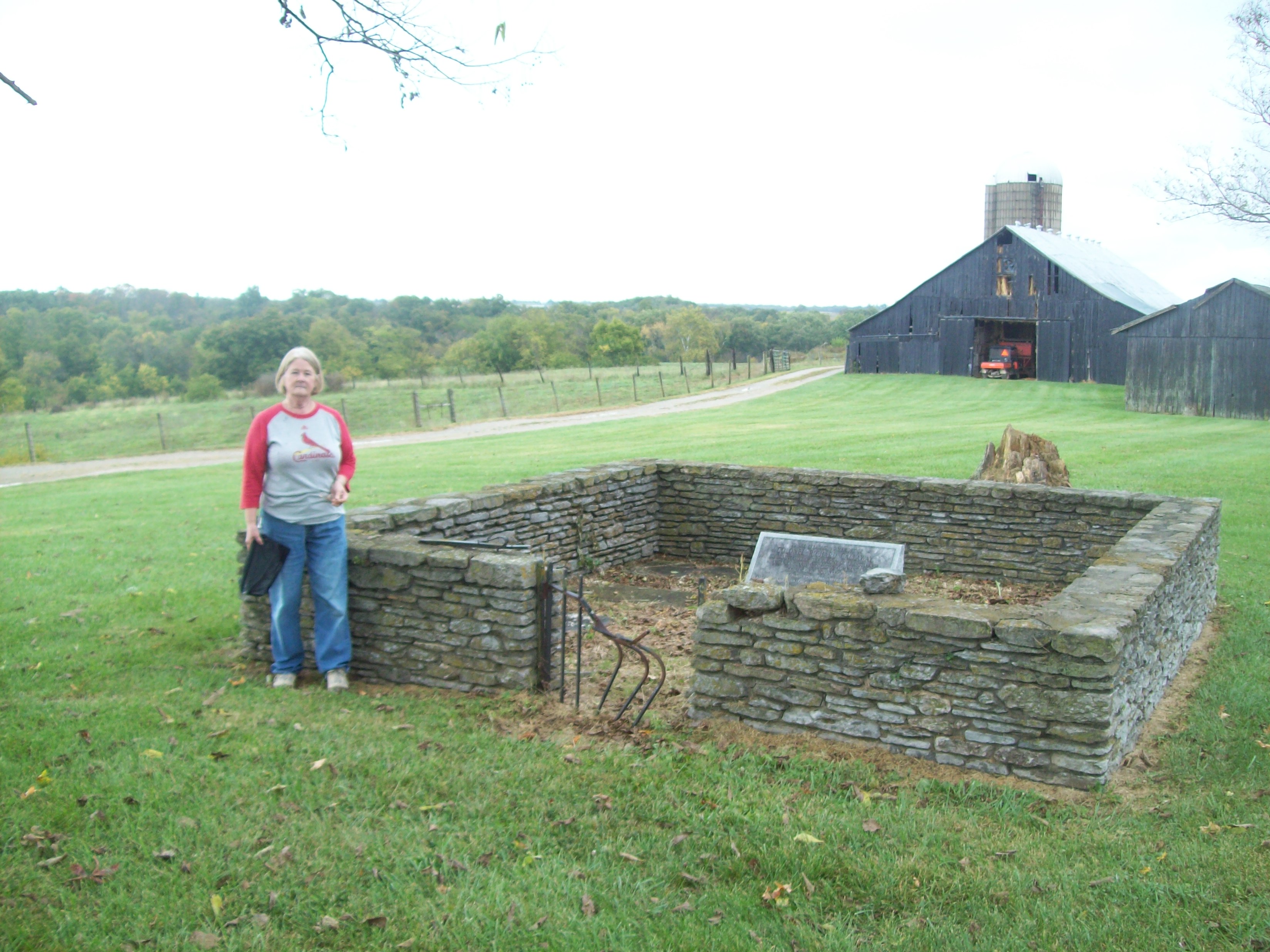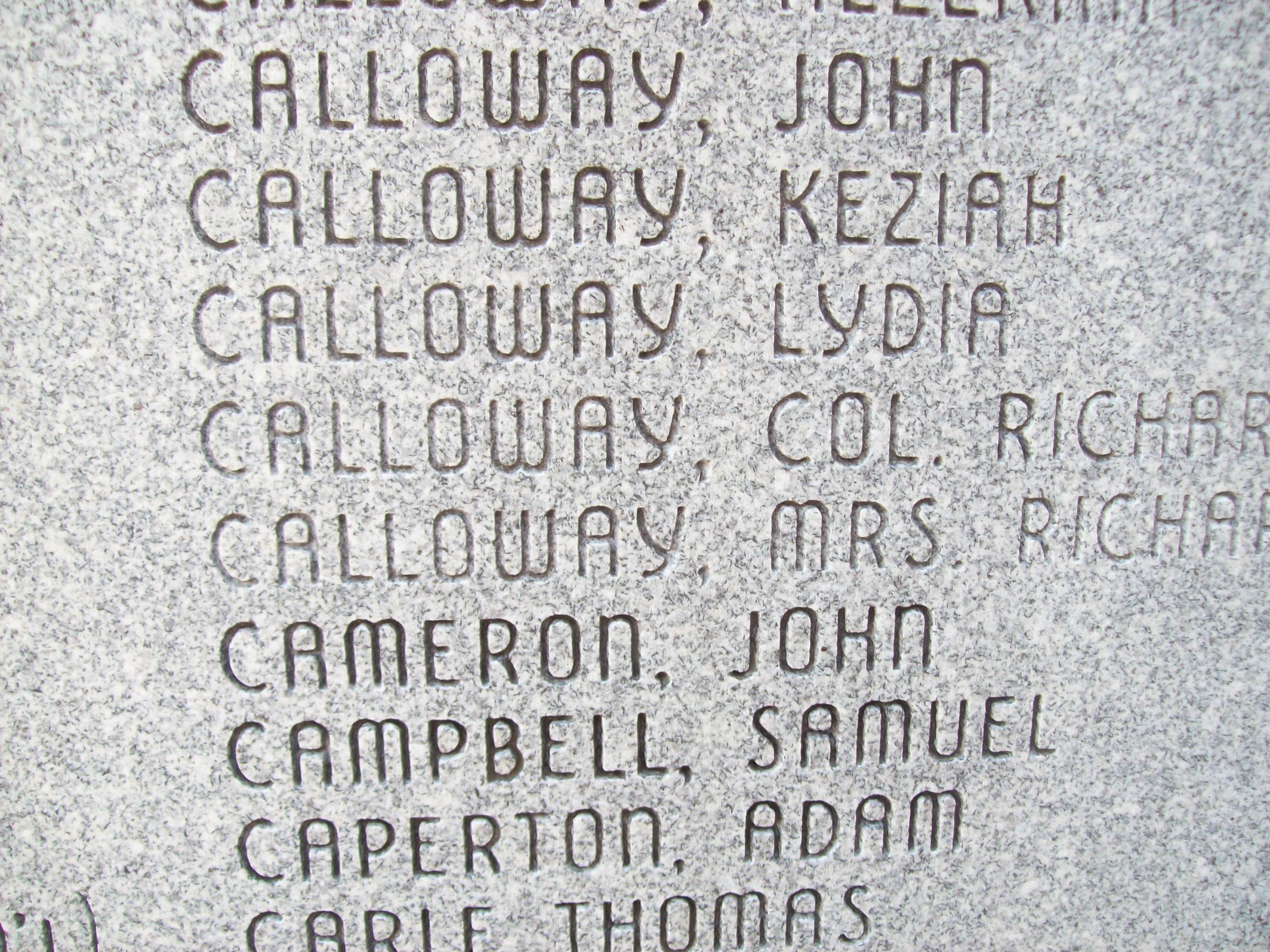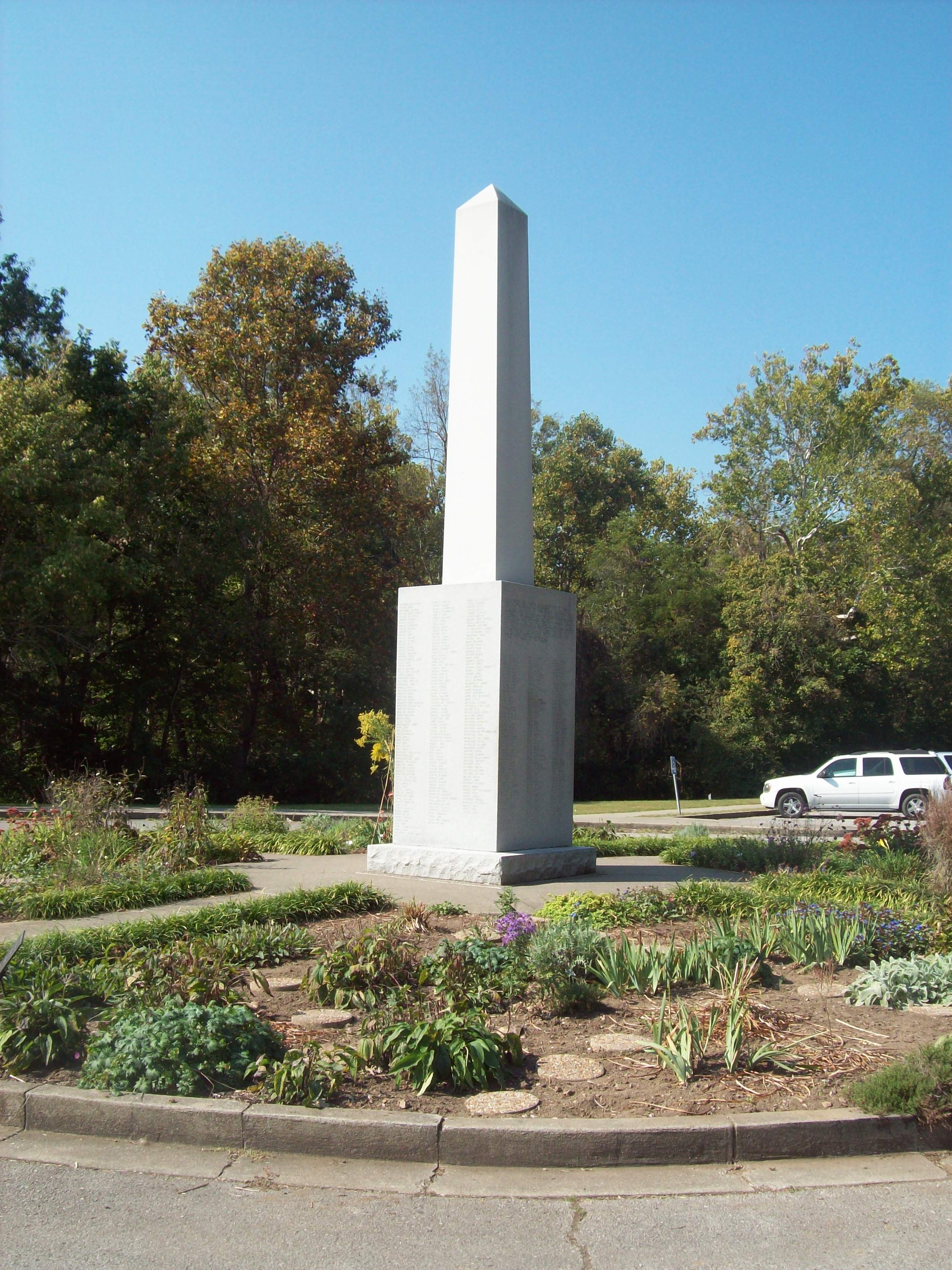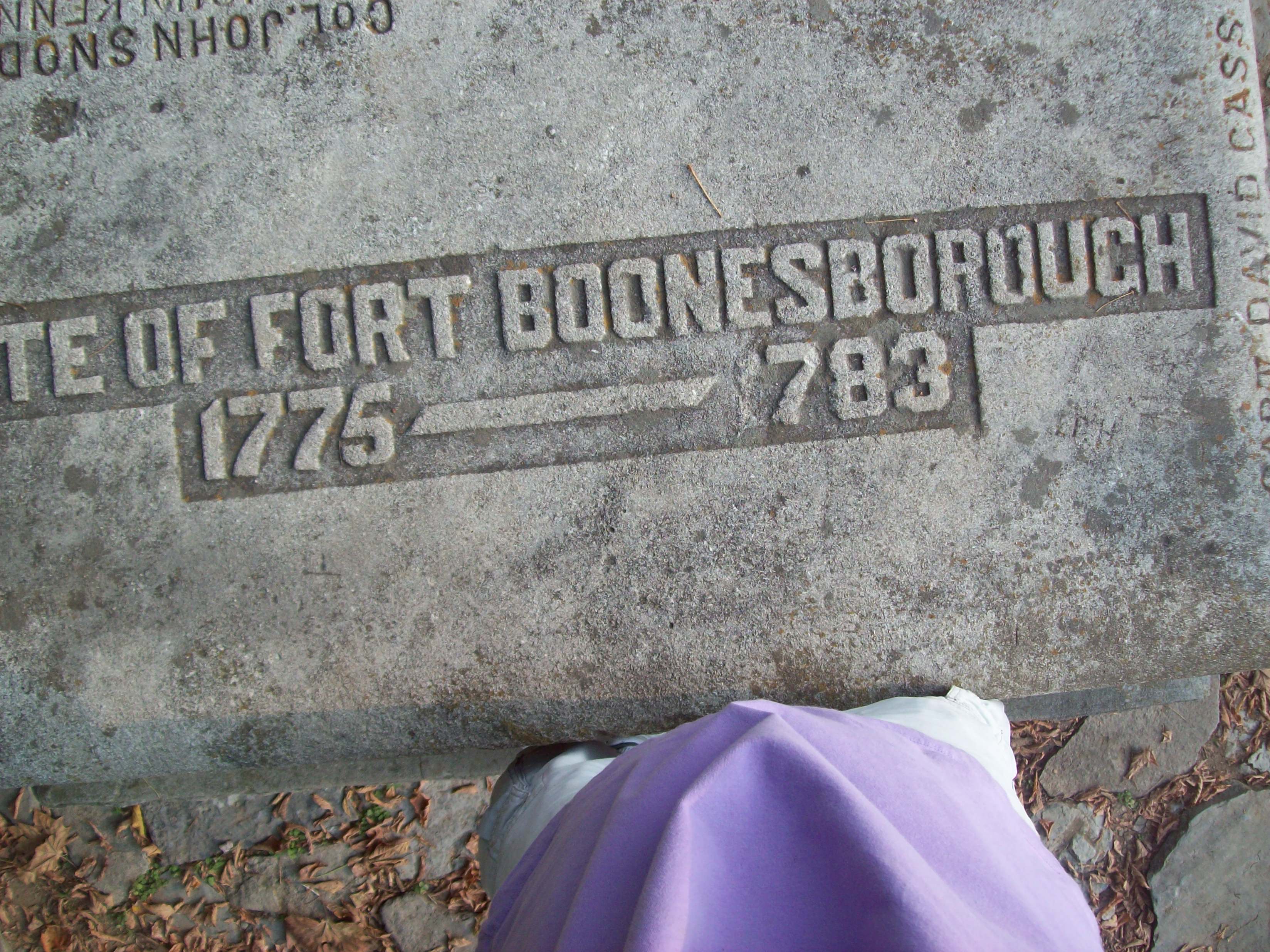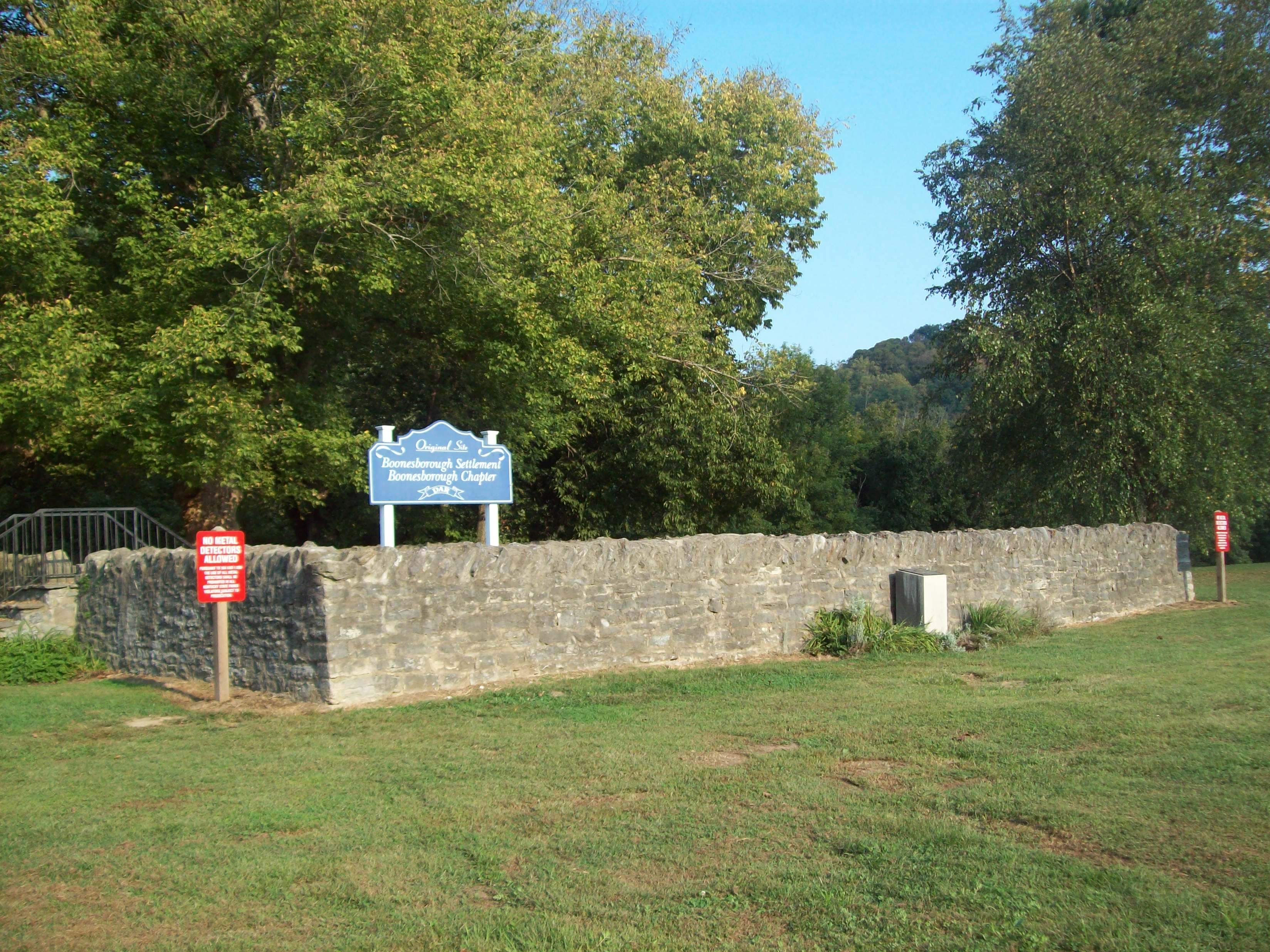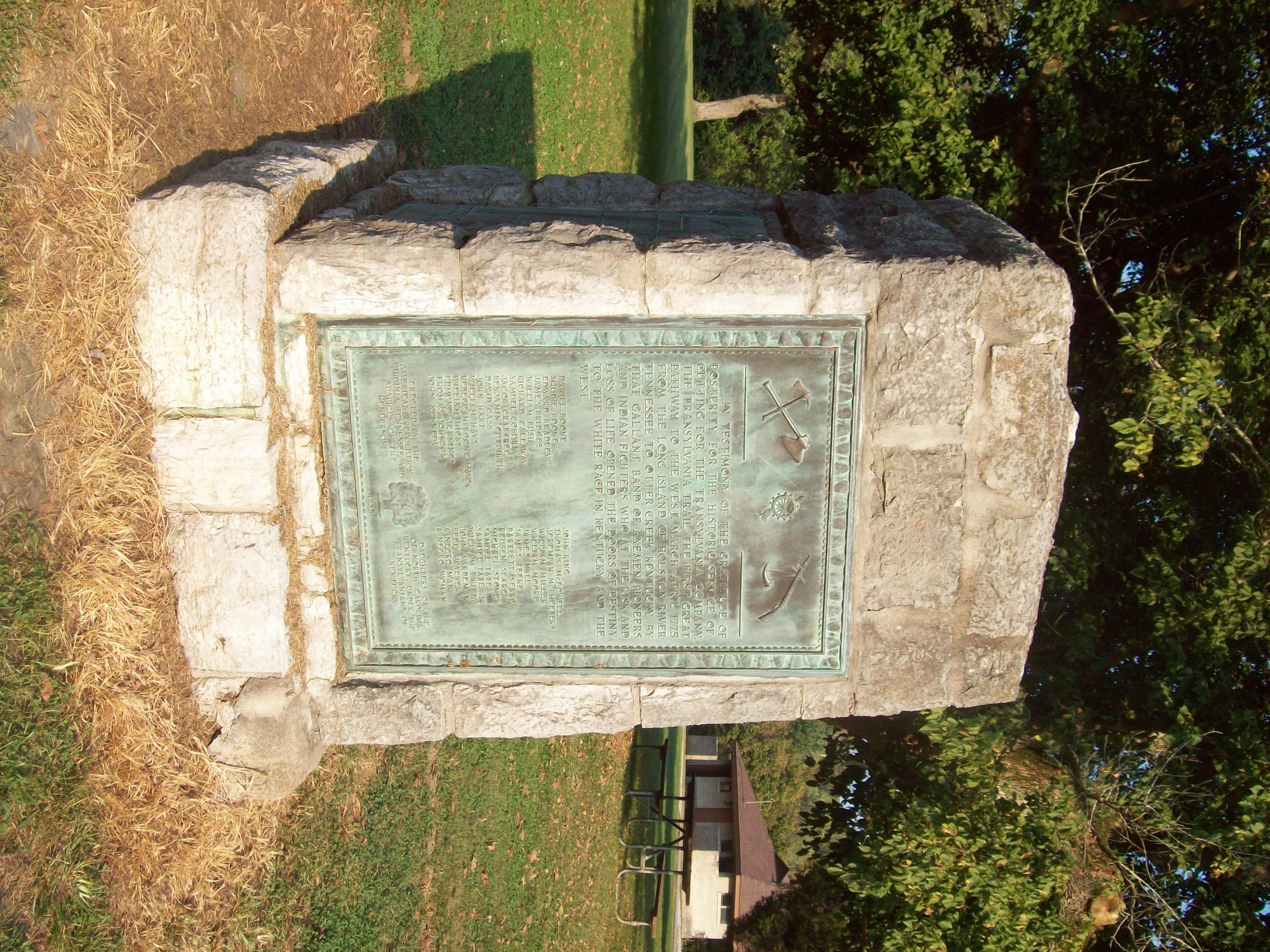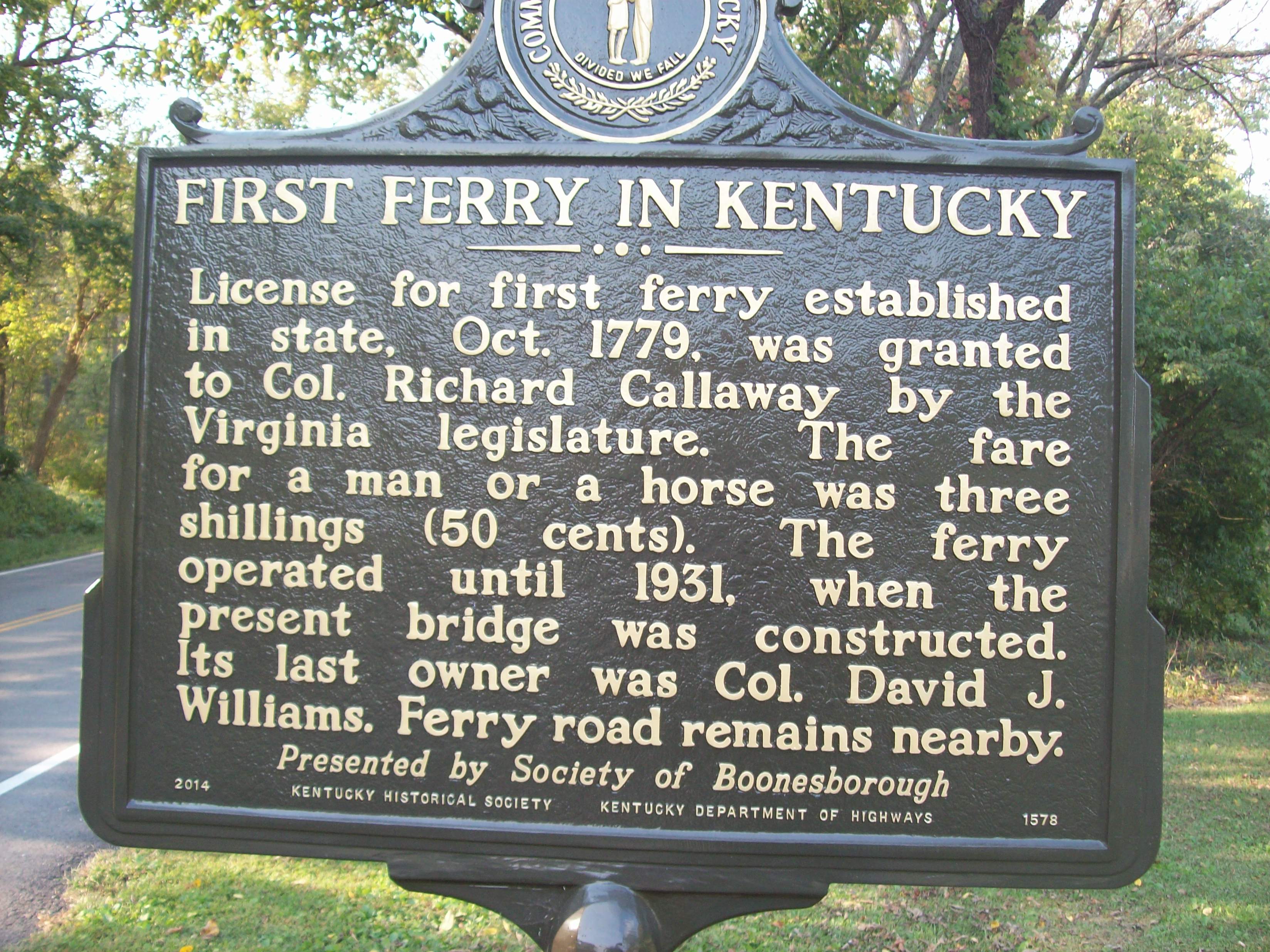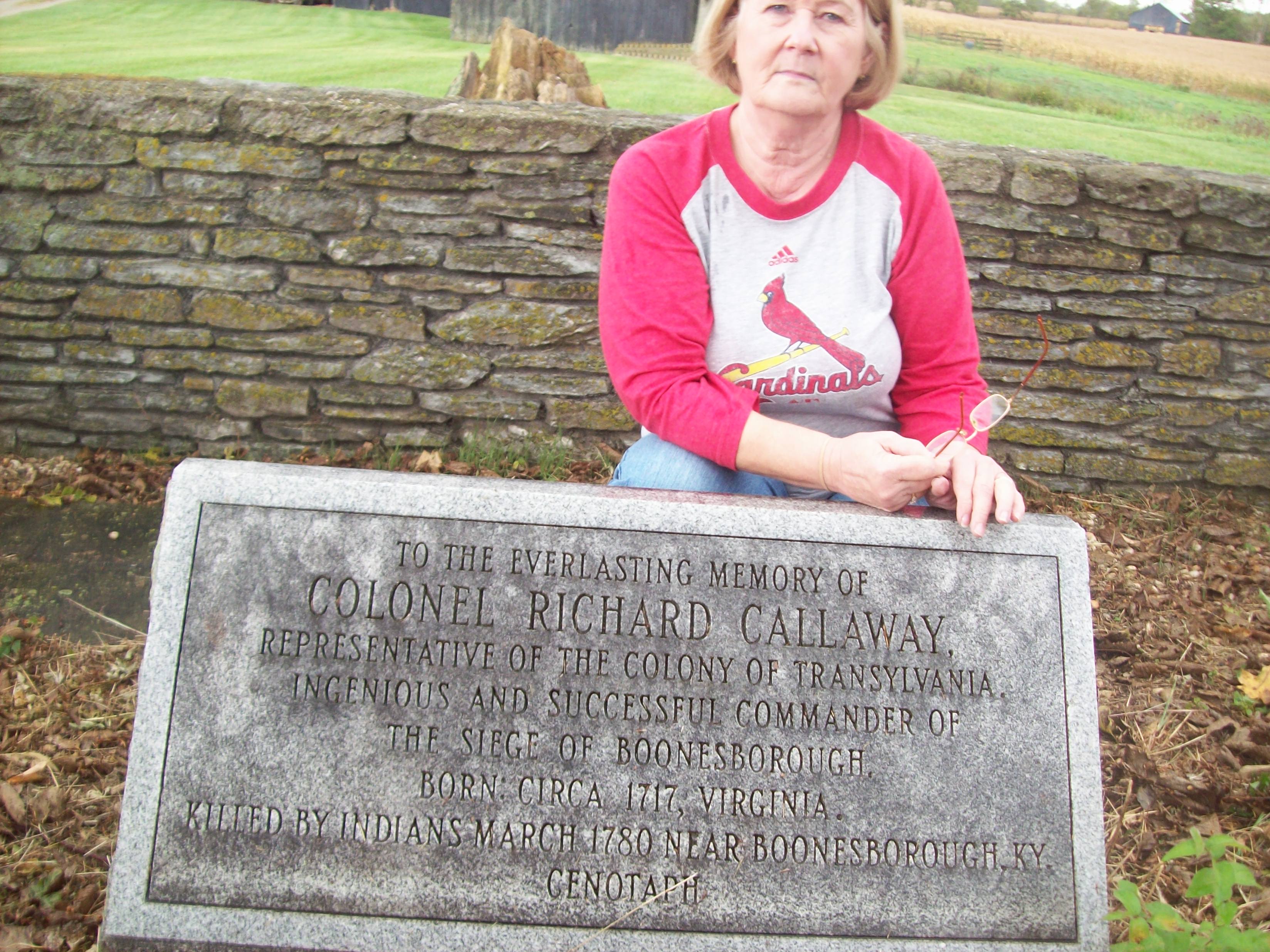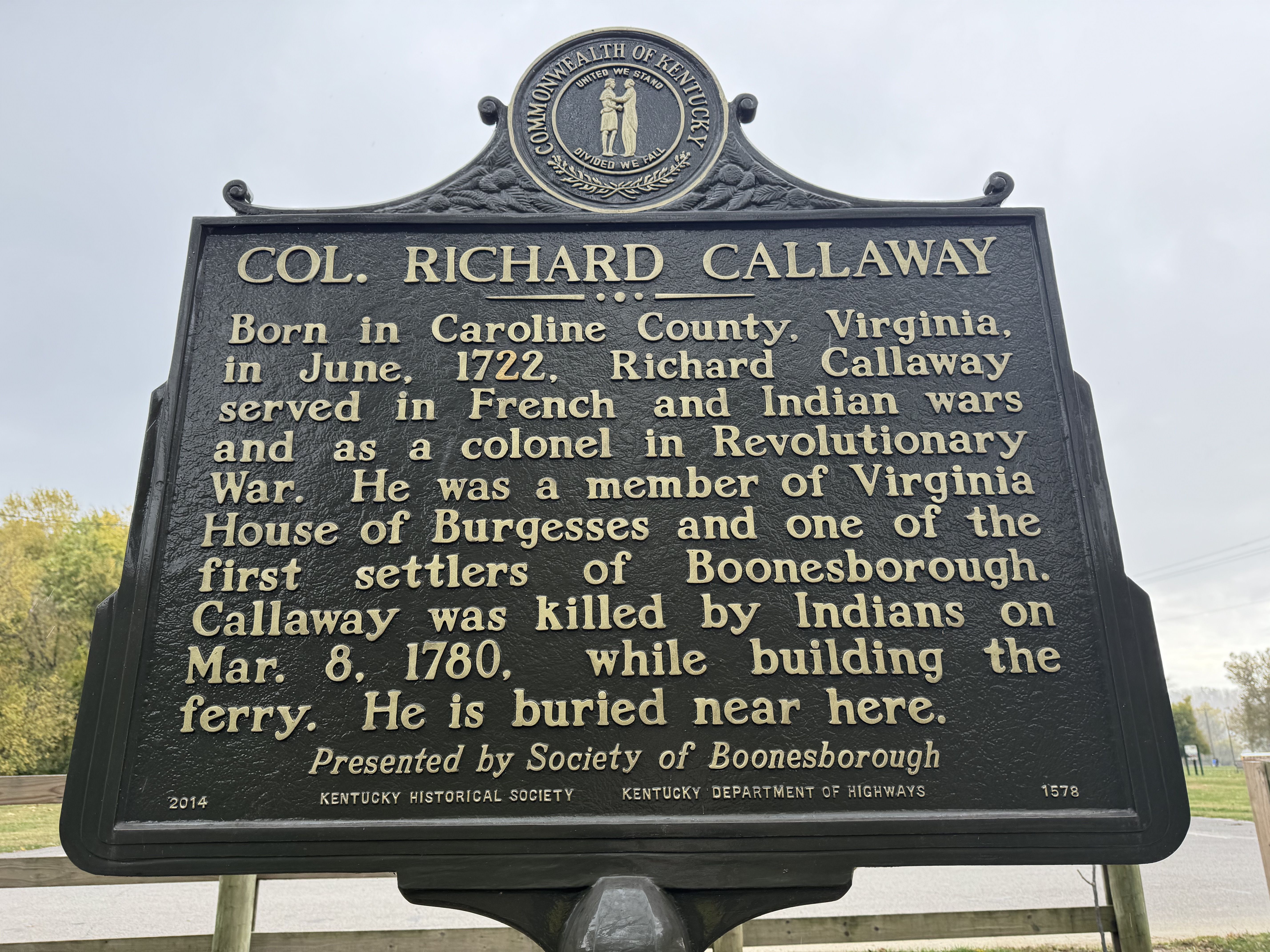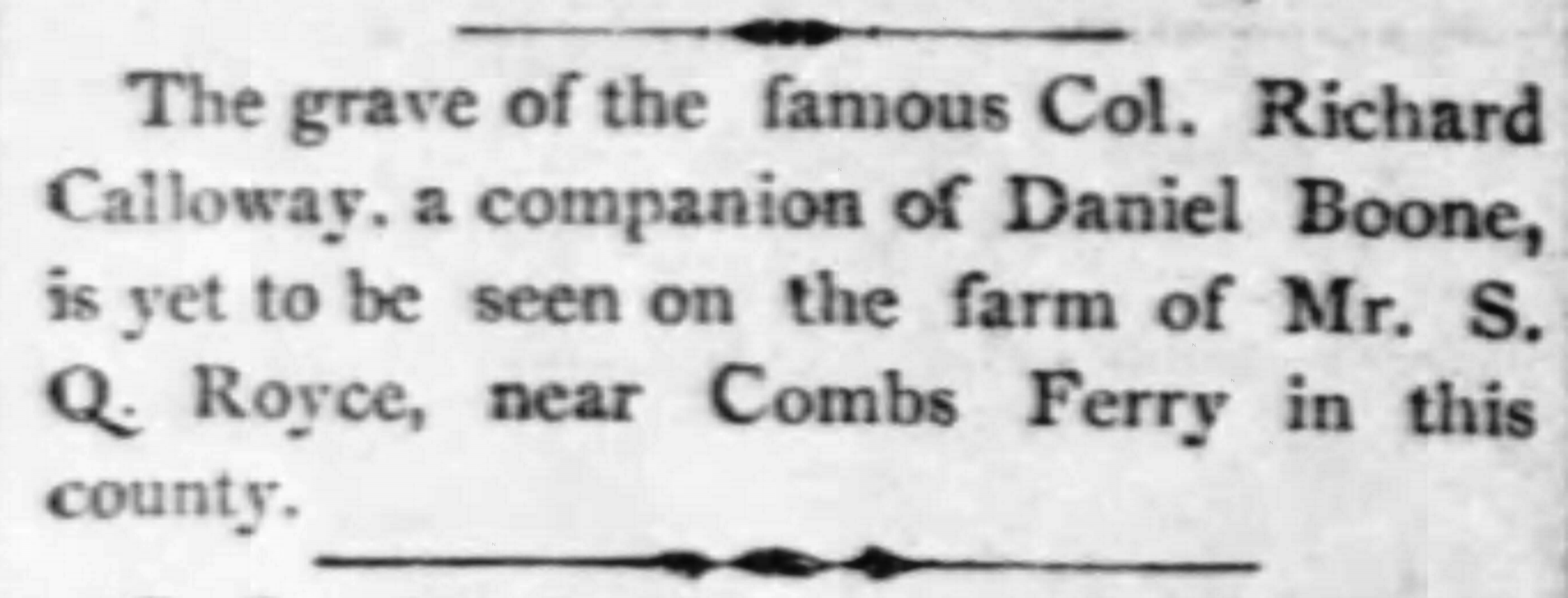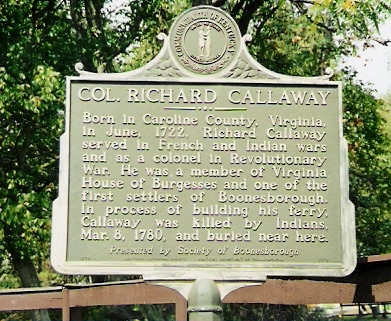Richard Callaway was born June 14, 1717, according to the Richard Callaway Bible. Various other dates of his birth can be found in printed and manuscript mater, but the 1717 date seems to be borne out by the first appearance of Richard Callaway in official records, and the law required that a man be of legal age, or 21 years old, to witness a legal document. So a mathematical deduction brings the conclusion that Richard was born "about 1717". The place of Richards birth is another fact often debated, as he could have been born in Essex County, Virginia, where his Father, Joseph was a landowner, although he could have been born on the original grant from the Crown in Charles City County, Virginia, and yet another source (Ranck) says he was a native of Caroline County, Virginia. At eighteen years of age, he settled on Big Otter River, then in Brunswick County, afterwards in Lunenburg and finally in Bedford County, Virginia, at the eastern base of the noted Peaks of Otter.
About 1745, Richard married Frances Walton, and to this union 13 children were born. Late in the year 1766, soon after the birth of their daughter, Theodosia, his wife Frances died, and within the next year (1767) Richard married his second wife, Elizabeth Jones Hoy. There were three children born to this marriage.
Richard was appointed Constable of Lunenburg County, Virginia on May 5, 1746, and on August 20, 1747, he patented his first land, 244 acres in Brunswick County, Virginia on the lower side of Buffalo Creek. This land, was sold to William Callaway, his brother on March 8, 1750, and on July 2, 1754, Richard patented 4,100 acres of land in Lunenburg Co. He sold most of these 4,100 acres to others over a period of years, but retained 1,000 acres for his own plantation where he lived with his wife, Frances and his family. This remained his home until about September 1768, when he and his new wife, Elizabeth Jones Hoy, sold the tract to Peter Davie and Robert Cowan. They then moved to a tract he had purchased from Thomas Turpin in 1765, 700 acres near the Blue Ridge Mountains. They lived on this plantation for the remainder of their years in Bedford County. During the last twenty years of his residency in Virginia, Richard patented and then sold large tracts of land. He patented over 9,000 acres (9,386) but we find that he purchased only two tracts, the 700 acres bought from Thomas Turpin where he resided after 1768 and lot No. 30 in the Town of New London.
In 1755, the French and Indian wars were being waged, they lasted from 1754 to 1763, and Richard Callaway served during this period with distinction, ultimately being promoted to the rank of colonel of the militia. Now the protection of three hundred and fifty miles of frontier was the task of the Virginia militia, and Richard Callaway had command at Black Water Fort. Thus Richard became acquainted with and experienced in the construction and defense of outpost forts. This experience enabled him later to be of inestimable value at Boonesborough. Colonel Richard Callaway, after the French and Indian Wars, moved from Virginia to the Yadkin region of North Carolina but returned to Virginia just before the American Revolution. But while in the Yadkin region, he became acquainted with the famous explorer, Daniel Boone. This relationship led to Richard's connection to the Transylvania Company and his participation in the founding of Boonesborough. It began when Daniel Boone, Colonel Callaway, and about 28 other pioneers began to mark and cut out a road to the spot of their destination - Boonesborough. They were attacked by Indians twelve miles from Boonesborough and one man was killed and another wounded. None the less the men were successful and what was soon to be known as Kentucky, saw it's beginning.
When the Colonel left his attractive surroundings in Virginia to come to the wilderness that was to become Kentucky, he was simply continuing his habit of pioneering. By reason of his experiences in the French and Indian Wars, in constructing and defending outpost's forts, in the clearance and cultivation of frontier lands, and in the settlement and founding of New London, Colonel Callaway was, perhaps, the best prepared man with the Transylvania Company for the work at hand.
On the fourteenth day of July, 1776, two of Col. Callaway's daughters and one of Daniel Boone's, were taken captive near the fort, by a band of Indians. The two father's struck out with separate search parties, and within two days the girls were rescued and returned home. This adventure is said to have been the inspiration for "The Last of The Mohican's" by James Fenimore Cooper, 1826.
In September of 1778, the fort at Boonesborough was surrounded by a powerful force flying the English flag--four hundred and forty-four savages gaudy in the vermilion and ocher of their war-paint, and eleven Frenchmen, under the command of French-Canadian, Captain Dagniaux de Quindre, and the great Indian Chief, Black-fish. During the siege Callaway, the leader of the pioneers, made a wooden cannon wrapped with wagon tines, which on being fired at a group of Indians "made them scamper for there lives". The secret effort of the Indians to tunnel a way underground into the fort, being discovered by the defenders, was frustrated by a countermine. Unable to outwit, outfight, or outmaneuver the resourceful Richard Callaway, de Quindre finally withdrew on September 16th, closing the longest and severest attack that any of the fortified stations of Kentucky had ever been called upon to withstand.
In October of 1779, the Virginia Legislature granted Richard Callaway's petition to build a ferry across the Kentucky River at Boonesborough. On March 8, 1780 Colonel Richard Callaway and several companions were working on his ferry boat about a mile above the settlement at Boonesborough, when they were fired upon by a party of Shawnee Indians. Callaway was killed, scalped and burned. When his body was recovered, it was noted that the Indians had rolled the body in the mud. Pemberton Rawlings was mortally wounded in the attack and also died. The two comrades were buried in a single grave within the old fort or stockade at Boonesborough.
When it was founded in 1822, Calloway County, Kentucky, was named in honor of Richard Callaway, my 6th great grand father.
Documentation of his service by the DAR:
CALLAWAY, RICHARD (Col.) Ancestor
Service: VIRGINIA Rank(s): CIVIL SERVICE, PATRIOTIC SERVICE, COLONEL
Birth: 6- -1722 KING WILLIAM CO VIRGINIA
Death: 3-8-1780 FORT BOONESBOROUGH KENTUCKY CO VIRGINIA
Service Source: ECKENRODE, LIST OF REV SOLS OF VA, VOL 1, PP 79, 80; MCILWAINE, JOURNAL OF THE COUNCIL OF THE STATE OF VA, VOL 1, PP 424, 430; HENING, STATUTES AT LARGE OF VA, VOL 9, PP 316, 317, VOL 10, PP 134, 135
Service Description: 1) COL, MILITIA, 1777-1779; DELEGATE TO GENERAL ASSEMBLY, 1777; JUSTICE OF THE PEACE, 1777;
2) TRUSTEE APPOINTED BY GEN ASSEMBLY TO LAY OUT LOTS AND STREETS IN BOONESBOROUGH, 1779
RESIDENCE 1) City: FORT BOONESBOROUGH - County: KENTUCKY CO - State: VIRGINIA
SPOUSE
1) FRANCES WALTON
2) ELIZABETH JONES HOY
COMMENTS
1) EL - JOSHUA WAS NOT A SON OF THIS PATRIOT.
2) EL - FLANDERS IS NOT NAMED AS A CHILD IN THE BIBLE RECORD OF THIS FAMILY.
Children documented in the DAR records:
SARAH [1] GABRIEL PENN
MARY [1] CHARLES GWATKIN
JOHN [1] MARTHA ROBERTSON BOOKER
GEORGE [1] AMELIA CALLAWAY
FRANCES [1] JOHN HOLDER
LYDIA [1] CHRISTOPHER IRVINE
MILDRED [1] THOMAS NOELL
RICHARD [1] MARGARET WELLS
ELIZABETH/BETSY [1] SAMUEL HENDERSON
Richard Callaway was born June 14, 1717, according to the Richard Callaway Bible. Various other dates of his birth can be found in printed and manuscript mater, but the 1717 date seems to be borne out by the first appearance of Richard Callaway in official records, and the law required that a man be of legal age, or 21 years old, to witness a legal document. So a mathematical deduction brings the conclusion that Richard was born "about 1717". The place of Richards birth is another fact often debated, as he could have been born in Essex County, Virginia, where his Father, Joseph was a landowner, although he could have been born on the original grant from the Crown in Charles City County, Virginia, and yet another source (Ranck) says he was a native of Caroline County, Virginia. At eighteen years of age, he settled on Big Otter River, then in Brunswick County, afterwards in Lunenburg and finally in Bedford County, Virginia, at the eastern base of the noted Peaks of Otter.
About 1745, Richard married Frances Walton, and to this union 13 children were born. Late in the year 1766, soon after the birth of their daughter, Theodosia, his wife Frances died, and within the next year (1767) Richard married his second wife, Elizabeth Jones Hoy. There were three children born to this marriage.
Richard was appointed Constable of Lunenburg County, Virginia on May 5, 1746, and on August 20, 1747, he patented his first land, 244 acres in Brunswick County, Virginia on the lower side of Buffalo Creek. This land, was sold to William Callaway, his brother on March 8, 1750, and on July 2, 1754, Richard patented 4,100 acres of land in Lunenburg Co. He sold most of these 4,100 acres to others over a period of years, but retained 1,000 acres for his own plantation where he lived with his wife, Frances and his family. This remained his home until about September 1768, when he and his new wife, Elizabeth Jones Hoy, sold the tract to Peter Davie and Robert Cowan. They then moved to a tract he had purchased from Thomas Turpin in 1765, 700 acres near the Blue Ridge Mountains. They lived on this plantation for the remainder of their years in Bedford County. During the last twenty years of his residency in Virginia, Richard patented and then sold large tracts of land. He patented over 9,000 acres (9,386) but we find that he purchased only two tracts, the 700 acres bought from Thomas Turpin where he resided after 1768 and lot No. 30 in the Town of New London.
In 1755, the French and Indian wars were being waged, they lasted from 1754 to 1763, and Richard Callaway served during this period with distinction, ultimately being promoted to the rank of colonel of the militia. Now the protection of three hundred and fifty miles of frontier was the task of the Virginia militia, and Richard Callaway had command at Black Water Fort. Thus Richard became acquainted with and experienced in the construction and defense of outpost forts. This experience enabled him later to be of inestimable value at Boonesborough. Colonel Richard Callaway, after the French and Indian Wars, moved from Virginia to the Yadkin region of North Carolina but returned to Virginia just before the American Revolution. But while in the Yadkin region, he became acquainted with the famous explorer, Daniel Boone. This relationship led to Richard's connection to the Transylvania Company and his participation in the founding of Boonesborough. It began when Daniel Boone, Colonel Callaway, and about 28 other pioneers began to mark and cut out a road to the spot of their destination - Boonesborough. They were attacked by Indians twelve miles from Boonesborough and one man was killed and another wounded. None the less the men were successful and what was soon to be known as Kentucky, saw it's beginning.
When the Colonel left his attractive surroundings in Virginia to come to the wilderness that was to become Kentucky, he was simply continuing his habit of pioneering. By reason of his experiences in the French and Indian Wars, in constructing and defending outpost's forts, in the clearance and cultivation of frontier lands, and in the settlement and founding of New London, Colonel Callaway was, perhaps, the best prepared man with the Transylvania Company for the work at hand.
On the fourteenth day of July, 1776, two of Col. Callaway's daughters and one of Daniel Boone's, were taken captive near the fort, by a band of Indians. The two father's struck out with separate search parties, and within two days the girls were rescued and returned home. This adventure is said to have been the inspiration for "The Last of The Mohican's" by James Fenimore Cooper, 1826.
In September of 1778, the fort at Boonesborough was surrounded by a powerful force flying the English flag--four hundred and forty-four savages gaudy in the vermilion and ocher of their war-paint, and eleven Frenchmen, under the command of French-Canadian, Captain Dagniaux de Quindre, and the great Indian Chief, Black-fish. During the siege Callaway, the leader of the pioneers, made a wooden cannon wrapped with wagon tines, which on being fired at a group of Indians "made them scamper for there lives". The secret effort of the Indians to tunnel a way underground into the fort, being discovered by the defenders, was frustrated by a countermine. Unable to outwit, outfight, or outmaneuver the resourceful Richard Callaway, de Quindre finally withdrew on September 16th, closing the longest and severest attack that any of the fortified stations of Kentucky had ever been called upon to withstand.
In October of 1779, the Virginia Legislature granted Richard Callaway's petition to build a ferry across the Kentucky River at Boonesborough. On March 8, 1780 Colonel Richard Callaway and several companions were working on his ferry boat about a mile above the settlement at Boonesborough, when they were fired upon by a party of Shawnee Indians. Callaway was killed, scalped and burned. When his body was recovered, it was noted that the Indians had rolled the body in the mud. Pemberton Rawlings was mortally wounded in the attack and also died. The two comrades were buried in a single grave within the old fort or stockade at Boonesborough.
When it was founded in 1822, Calloway County, Kentucky, was named in honor of Richard Callaway, my 6th great grand father.
Documentation of his service by the DAR:
CALLAWAY, RICHARD (Col.) Ancestor
Service: VIRGINIA Rank(s): CIVIL SERVICE, PATRIOTIC SERVICE, COLONEL
Birth: 6- -1722 KING WILLIAM CO VIRGINIA
Death: 3-8-1780 FORT BOONESBOROUGH KENTUCKY CO VIRGINIA
Service Source: ECKENRODE, LIST OF REV SOLS OF VA, VOL 1, PP 79, 80; MCILWAINE, JOURNAL OF THE COUNCIL OF THE STATE OF VA, VOL 1, PP 424, 430; HENING, STATUTES AT LARGE OF VA, VOL 9, PP 316, 317, VOL 10, PP 134, 135
Service Description: 1) COL, MILITIA, 1777-1779; DELEGATE TO GENERAL ASSEMBLY, 1777; JUSTICE OF THE PEACE, 1777;
2) TRUSTEE APPOINTED BY GEN ASSEMBLY TO LAY OUT LOTS AND STREETS IN BOONESBOROUGH, 1779
RESIDENCE 1) City: FORT BOONESBOROUGH - County: KENTUCKY CO - State: VIRGINIA
SPOUSE
1) FRANCES WALTON
2) ELIZABETH JONES HOY
COMMENTS
1) EL - JOSHUA WAS NOT A SON OF THIS PATRIOT.
2) EL - FLANDERS IS NOT NAMED AS A CHILD IN THE BIBLE RECORD OF THIS FAMILY.
Children documented in the DAR records:
SARAH [1] GABRIEL PENN
MARY [1] CHARLES GWATKIN
JOHN [1] MARTHA ROBERTSON BOOKER
GEORGE [1] AMELIA CALLAWAY
FRANCES [1] JOHN HOLDER
LYDIA [1] CHRISTOPHER IRVINE
MILDRED [1] THOMAS NOELL
RICHARD [1] MARGARET WELLS
ELIZABETH/BETSY [1] SAMUEL HENDERSON
Family Members
-
Sarah Callaway Penn
1746–1826
-
![]()
George Callaway
1748–1772
-
Mary Callaway Gwatkin
1752–1829
-
![]()
Elizabeth "Betsy" Callaway Henderson
1760–1815
-
Caleb Calloway
1761–1829
-
![]()
Frances Walton "Fanny" Callaway Holder/ McGuire
1763–1803
-
Lydia Callaway Hickman
1764–1835
-
![]()
Mrs Theodosia "Doshea" Callaway Callaway
1766–1832
-
![]()
Kezia Callaway French
1768–1845
-
![]()
Col Richard Callaway Jr
1771–1849
-
![]()
Col John Callaway
1775–1825
